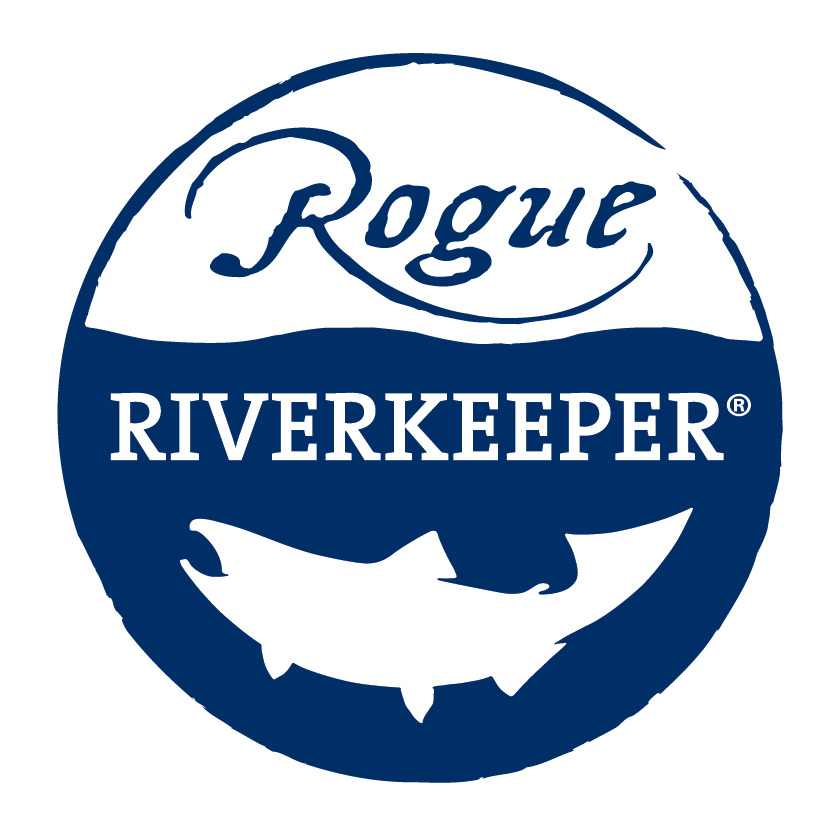320 Miles of Increased Protections for Salmon + Steelhead Streams on Private Forest Lands
On June 3rd, the Oregon Board of Forestry voted unanimously to improve stream buffer standards for southern Oregon streams.
This decision brings protections for approximately 320 miles of small and medium salmon and steelhead streams across 1 million acres of private forest lands within the Rogue watershed up to the same standards applied to the rest of western Oregon in 2017.
What is a stream buffer?
Stream buffer standards establish how close industrial timber companies can cut down trees near streams. Cutting trees near streams results in less shade and warmer, more polluted water. Stream buffer standards are established under the Oregon Forest Practices Act (“OFPA”), the state law that manages forest practices on state and private forest lands. The OFPA requires different stream buffer sizes and applications based on different stream types.
Read more about how stream buffers help to keep streams cool for healthy waterways and salmon.
What does the Board of Forestry’s decision mean?
In 2017, the Oregon Board of Forestry (BOF) adopted new stream buffer rules for the majority of western Oregon forests, modestly expanding stream buffers for small and medium salmon, steelhead, and bull trout streams. This is known as the “SSBT” (for “salmon, steelhead, and bull trout”) stream buffer rule.
However, before the SSBT rule was finalized, the Siskiyou region which includes much of the Rogue watershed was excluded from these increased protections. For years, local communities, landowners, businesses and forest and water advocates fought to see a new, stronger rule applied so that Siskiyou streams had the same protections as the rest of western Oregon forests.
The Board’s June 3rd unanimous decision approved a temporary rule that would apply the 2017 “SSBT” stream buffer rule to the Siskiyou region. This temporary rule will likely go into effect later this fall.
What happens next?
Earlier this spring, Rogue Riverkeeper joined with other conservation organizations and timber industry advocates in an agreement to adopt a process that could lead to stronger protections and effective reforms of current forest practices on state and private forestlands.
As part of this agreement, the signers committed to working together to support legislation in a 2020 short-term legislative session to : 1) apply the SSBT rule to the Siskiyou region and 2) reform aerial pesticide spraying practices. The signers also committed to working together to develop comprehensive legislation to reform current forest practices under a federally approved plan to protect salmon and other aquatic species in the state, known as a Habitat Conservation Plan.
Largely due to the Republican walk out in protest over the cap-and-trade bill before the Oregon legislature, the 2020 legislative session ended earlier than expected. This meant that no short-term legislation passed to either apply the SSBT rule to the Siskiyou or adopt the proposed aerial pesticide spray reforms. Despite the lack of legislative movement, the signers recommitted to this effort.
Approving and implementing this temporary rule to apply the SSBT stream buffer standards to the Siskiyou is a first step. However, it will be a long road ahead to effectively reform current forest practices to protect healthy waterways, forests and communities. This effort will require significant work over the next two years to secure a lasting legacy of healthy forests, clean drinking water, and modernized forest regulations for all Oregonians.
What can you do?
Your voice matters. It made a difference last week when the Oregon Board of Forestry voted to adopt this temporary rule, which will improve protections for nearly 320 miles of salmon and steelhead streams that flow through private forest lands. This is a critical first step, but there is much more to be done. Can you join in thanking the Board of Forestry for approving this temporary rule and ask them to implement it as soon as possible?
Your voice can also make a difference in the bigger issues of racial injustice and systemic racism in communities across the country. At Rogue Riverkeeper, we are taking a hard look at our own organization and identifying specific actions we can take moving forward to create a more just, equitable, and inclusive program to better serve all communities within the Rogue River Basin. As we take steps to become better allies to movements led by black, indigenous and people of color, we encourage you to check out helpful resources from Black Lives Matter, Movement for Black Lives, and Showing Up For Racial Justice to take action or donate.


